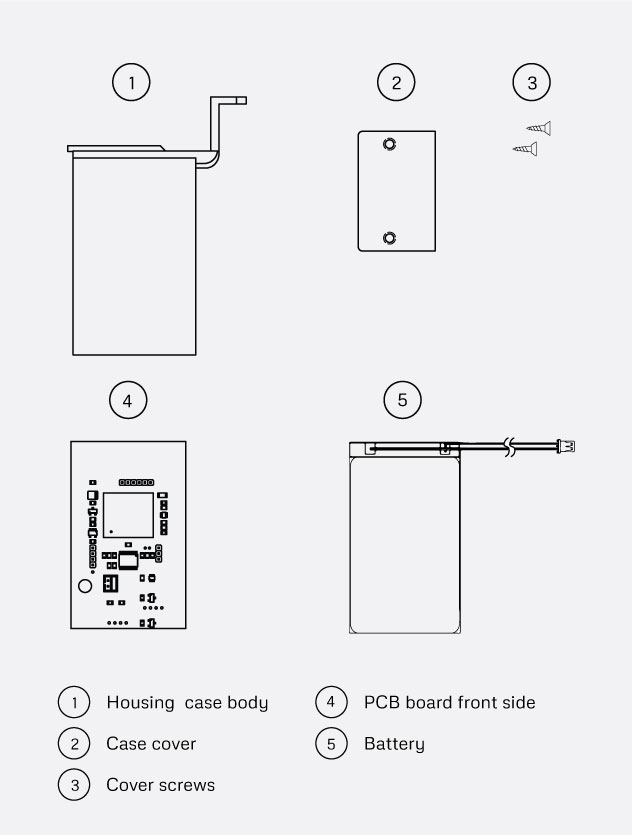Technical Specifications
Scope of Application
These Technical Specifications (TS) establish the minimum requirements for the design, assembly, testing, and packaging of the IoT device VADTel AIoTU5, intended for:
- Remote monitoring of utility meters (electricity, gas, water).
- Data transmission via GSM/GPRS networks based on the SIM800C module.
The device is designed for operation as part of IoT systems under conditions specified in these TS and EU directives.
References to Standards and Directives
- RED Directive 2014/53/EU
- ETSI EN 301 511 V12.5.1 (radio frequency characteristics).
- EN 62311:2020 (limits of electromagnetic exposure).
- RoHS Directive 2011/65/EU
- EN IEC 62321 (restriction of hazardous substances).
Test reports and certificates provided by laboratories:
- RED Certificate: LGAI Technological Center, S.A. (APPLUS), No.: 0370-RED-5126.
- RF Test Report: SHE24050058-01CE.
- MPE Test Report: SHE24050058-01DE.
- RoHS Test Report: SHAEC1906738501.
Manufacturing Process
PCB Assembly
- The board is manufactured in compliance with RoHS requirements and IPC-A-610 Class 2 standards.
- The SIM800C module is installed on the PCB using automated or manual assembly processes.
Firmware Installation
- The microcontroller firmware is programmed via a dedicated connector.
- The firmware must ensure:
- Initialization of the SIM800C GSM module.
- Support for MQTT and HTTP/HTTPS protocols.
- Connection test with the server.
Final Assembly
- The PCB is inserted into a plastic housing.
- A lithium-ion battery (capacity from 1000 to 6000 mAh) is connected to the PCB via a connector.
- The housing is closed and secured with two screws.

Final assembly
Quality Control
Functional Testing
- GSM connection testing:
- The device’s connection to the server via GSM900/1800 is tested.
- Successful tests are recorded in the production log.
Visual Inspection
- The device is inspected for housing integrity, secure attachment of screws, and proper battery connection.
Compliance Testing with EU Directives
- Electromagnetic compatibility (EMC) tests.
- Radio frequency emission (RF) measurements.
- Electromagnetic exposure (MPE) evaluation.
Performance Characteristics
Frequency bands and power:
- GSM 900: 880-915 MHz, maximum power 33.48 dBm.
- GSM 1800: 1710-1785 MHz, maximum power 30.61 dBm.
Operating conditions:
- Temperature: from -30°C to +60°C.
- Humidity: up to 98% (non-condensing).
- Protection class: IP54 (IEC 60529).
Power supply:
- Voltage: from 3.4V to 4.2V.
- Battery: lithium-ion, capacity 1000–6000 mAh.
Marking and Packaging
Marking
- The device is labeled as follows:
- IMEI number (barcode).
- Serial number.
- CE marking.
Packaging
- Each device is packed in an individual cardboard box.
- The box contains:
- The device with an installed battery.
- Device passport.
- Declaration of Conformity.
Documentation
The production log must include:
- Serial number and IMEI of the device.
- Results of GSM connection tests.
Supplied documentation:
- EU Declaration of Conformity.
- Certificates for the SIM800C module.
Revision History
| Version | Date | Changes |
|---|---|---|
| 1.0 | 2025-01-21 | Initial release of TS. |
Last updated on